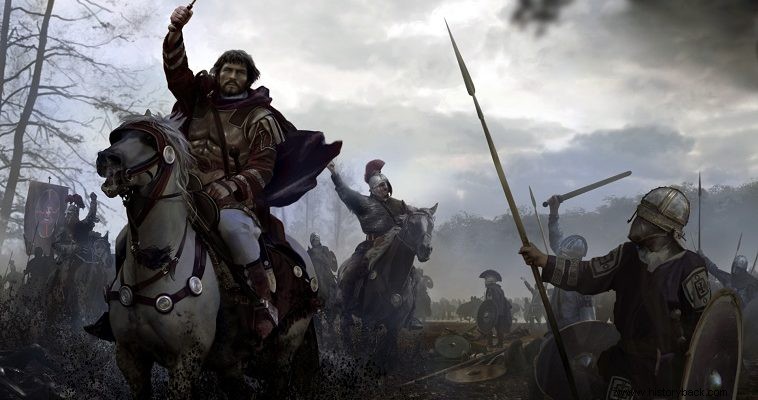
In 533 AD Justinian assigned the general Belisarius to conquer the marauding state of the Germanic Vandals in North Africa. For this purpose, he allocated only 5,000 horsemen of which 1,500 were elite buccalarians, under Ioannis Troglitis.
On June 24, 533 AD the small Byzantine army landed in North Africa. The Vandal king Gelimeros was not in his capital at that time. He had left his brother Amata as a watchman on the throne who informed him about the landing of the Byzantines. Helimeros then hastened to Carthage, ordering his brother to occupy with all available forces the strait at the tenth mile signpost (Tenth) from the capital of Carthage.
In the meantime, Belisarius, ignoring the movements of his opponent, advanced his army towards Carthage, covering his left flank with his 600 Hunnic horsemen. He also ordered Ioannis Troglitis to move with 300 buccaneers, as an advance guard, at a distance of 4 km. from the main body.
On July 3 the small Byzantine army reached a distance of about 8 km from the strait of Decimos . Belisarius did not think of immediately extorting the passage. He ordered his men to build a new fortified camp, so that even if the slightest accident occurred, they would have a shelter.
Amatas, on the other hand, had been dramatically delayed in understanding and manning the strait with serious forces. At noon on the 3rd of July only he and 100 horsemen were there, but again without having even taken up battle positions. Amatas had ordered the Vandals of Carthage to follow him. But his soldiers were slow to "recruit".
So Gelimeros changed his plan and decided to move himself with about 30,000 men (newer historians speak of only 9,000 men) towards the Decimus and join his brother's forces. At the same time, he commissioned his nephew Givamundos, with 2,000 horsemen, to perform a hypercaerotic maneuver, encircling the Byzantines, at the time when he himself would hit them head on.
Belisarius having ensured his defense, outside the strait, creating a fortified camp, ordered his friend John Troglitis with the 300 buccalarians to move inside it. Since he hadn't spotted any serious Vandal forces occupying it by then, he figured he'd be the first to capture it. Indeed John's men moved cautiously within the narrowness. Suddenly they spotted the 100 Vandals of Amata and attacked them.
The Vandals fought bravely killing 12 Byzantines. In the end, however, they were defeated and disbanded. And Amatas, who tried to attack John, received from the Byzantine officer a hand cannon (or riptario, a type of arrow-shaped projectile thrown by hand) and fell dead. After this the surviving Vandals fled in panic, pursued on foot by the buccalarians.
The fugitive Vandals, in their panic, also drove away their fellow soldiers, who were coming unorganized, in small groups from Carthage to man the defensive line in the strait. Thus, along the entire distance of 14 km from the strait of Decimos, to the walls of Carthage, thousands of Vandals ran in panic to escape the advance of 288 Byzantine buccals!
The Vandals panicked, fled to Carthage, where they were "besieged" by the three centarchies (islands) of the buccalarians! The success of Ioannis Troglitis acquired even greater weight since it precluded any reinforcement mission to the army of Gelimeros. The victory of John's 300 was of catalytic importance for the development of the battle and the subsequent defeat of the Vandals.
